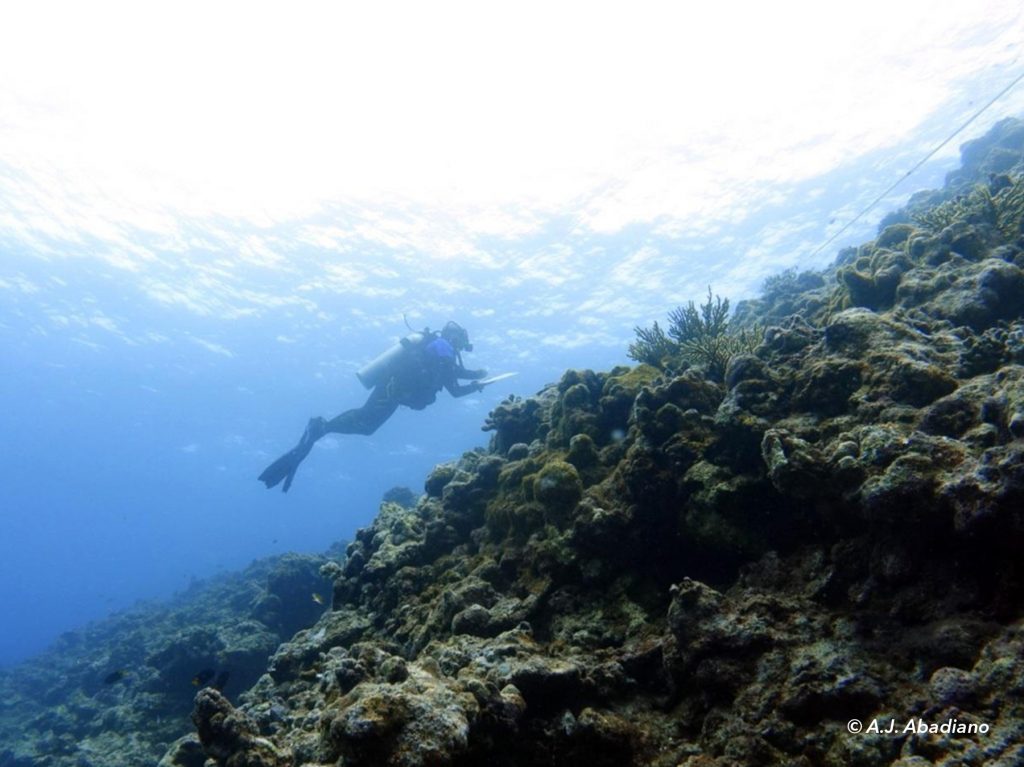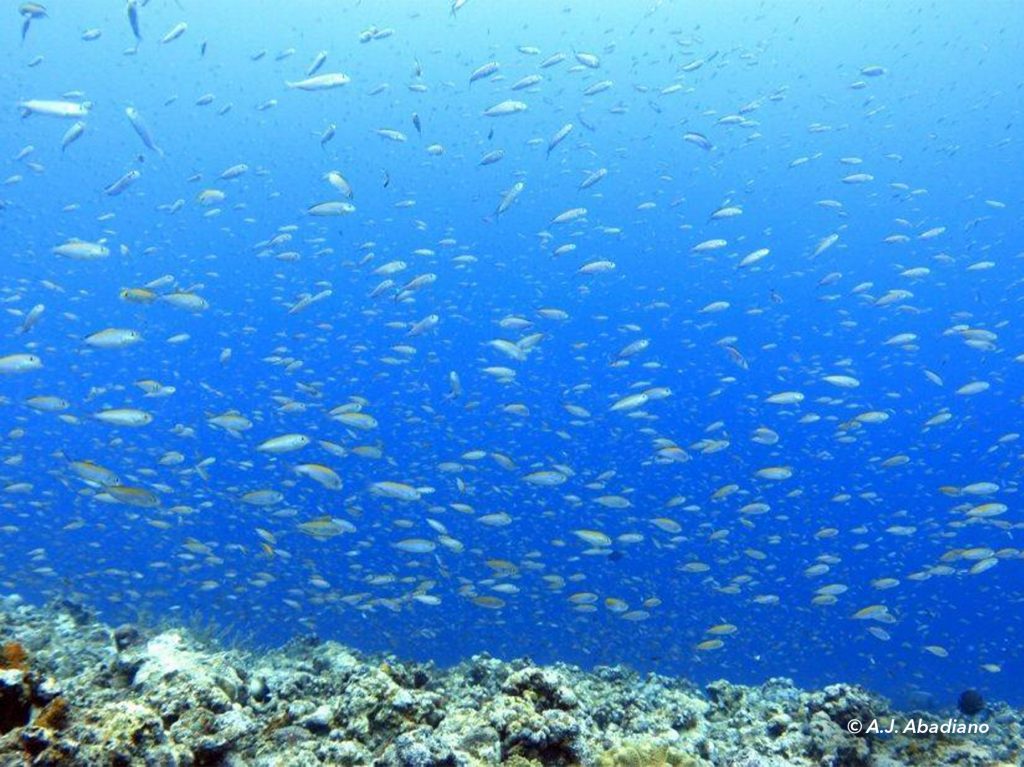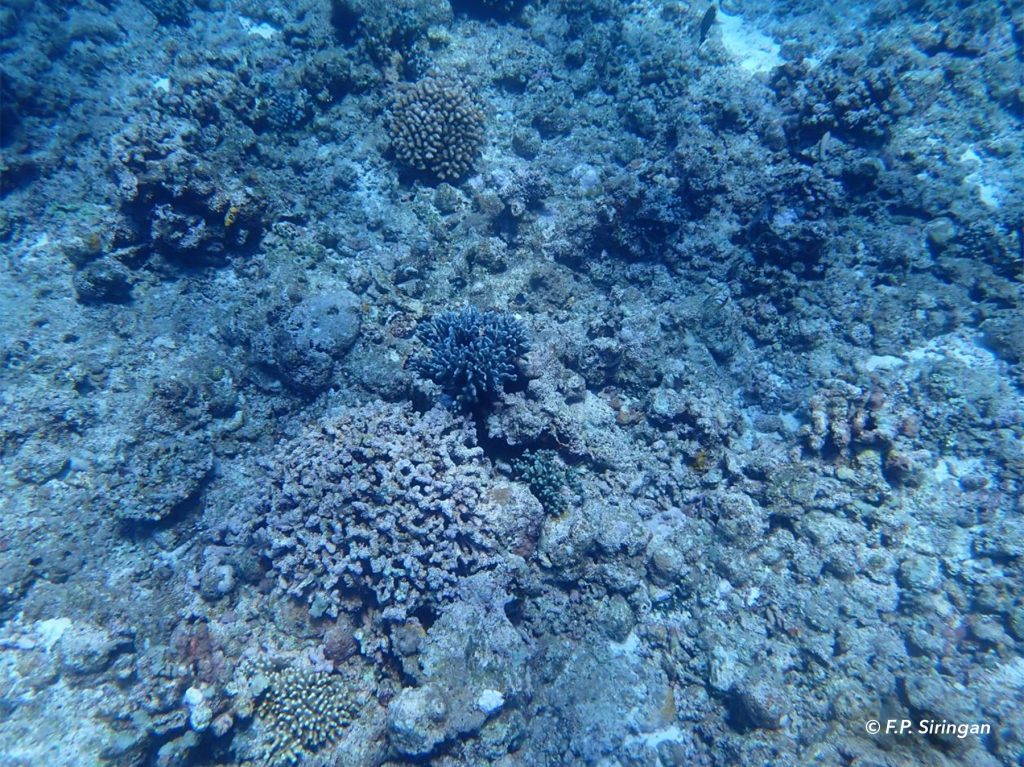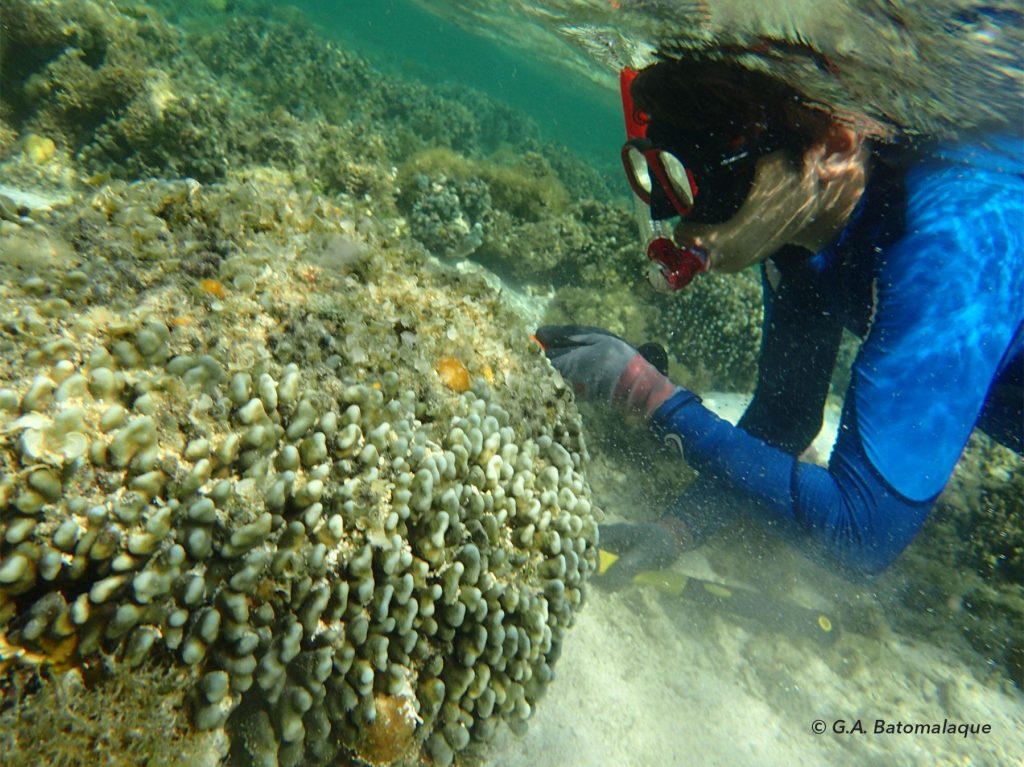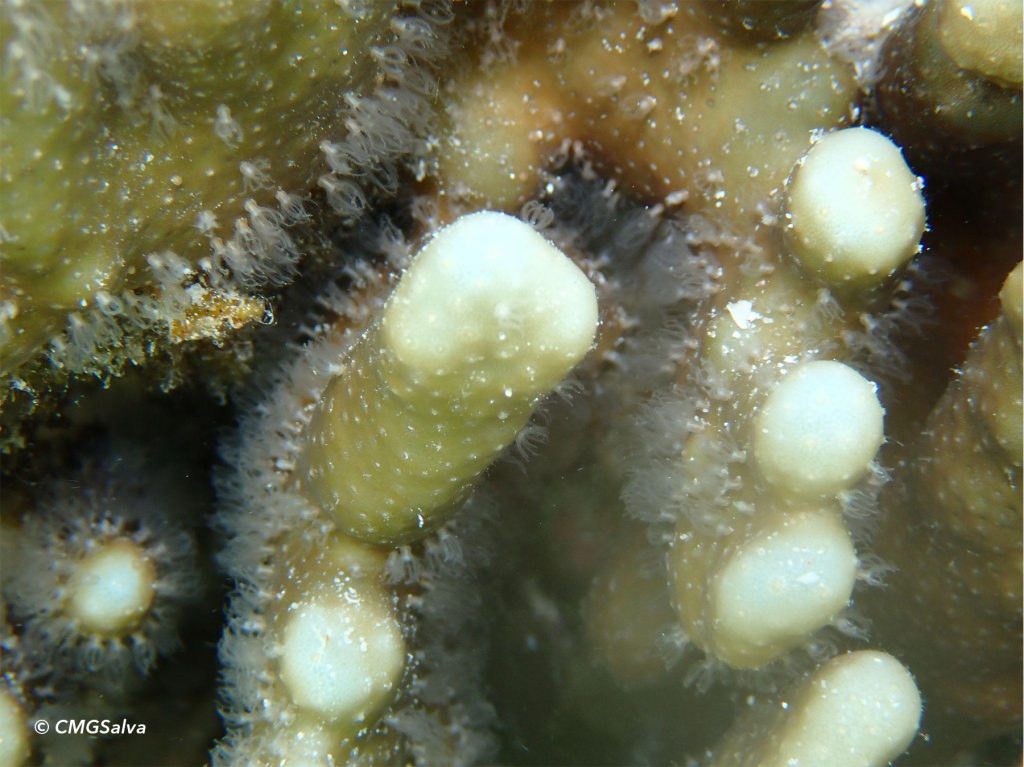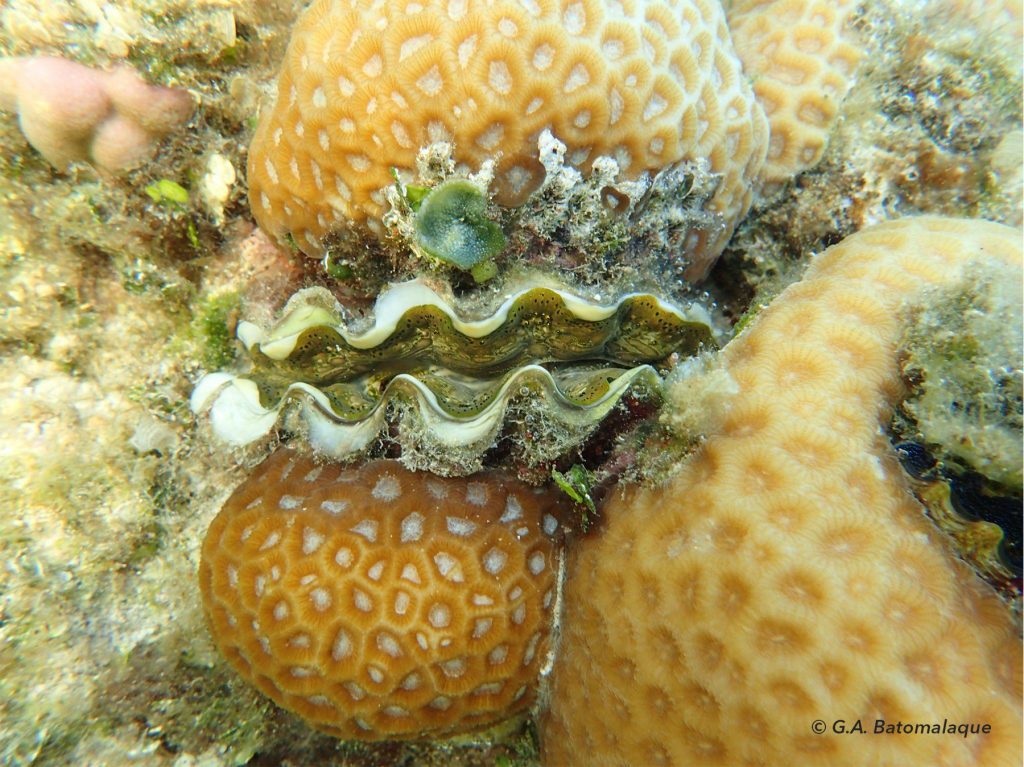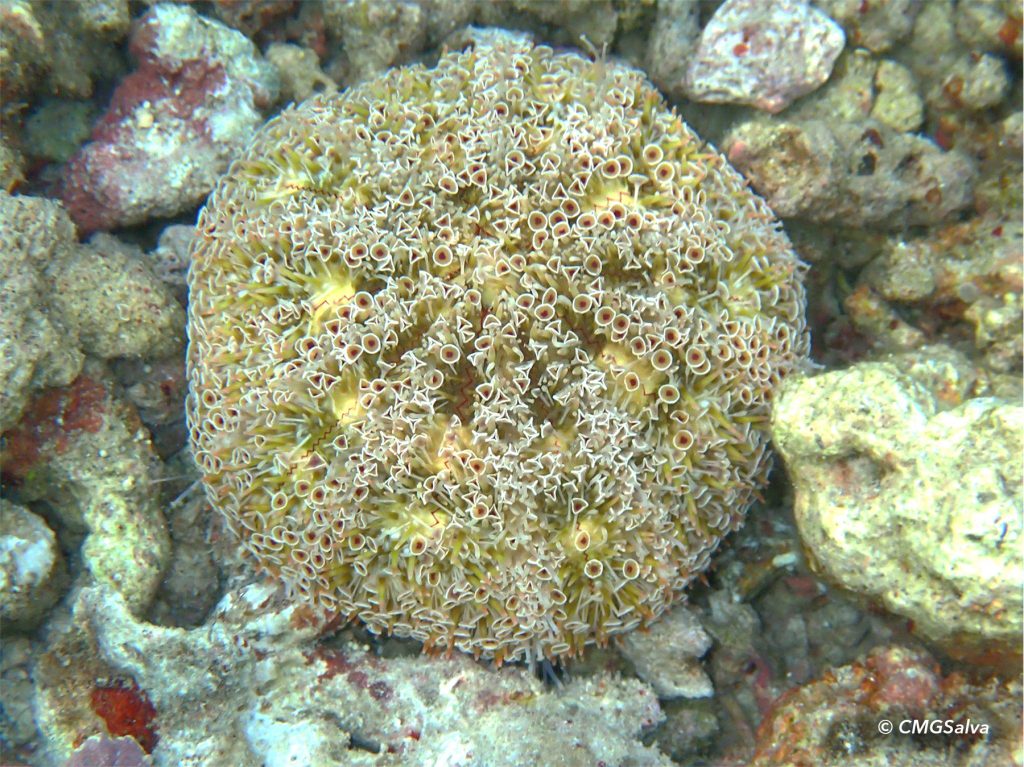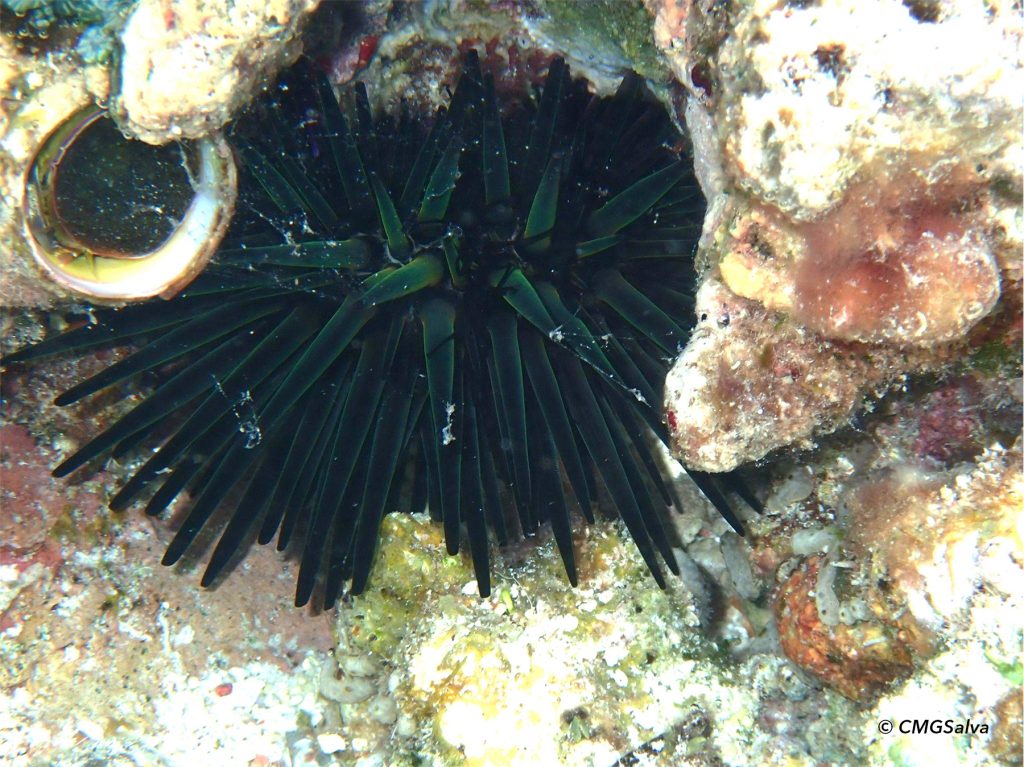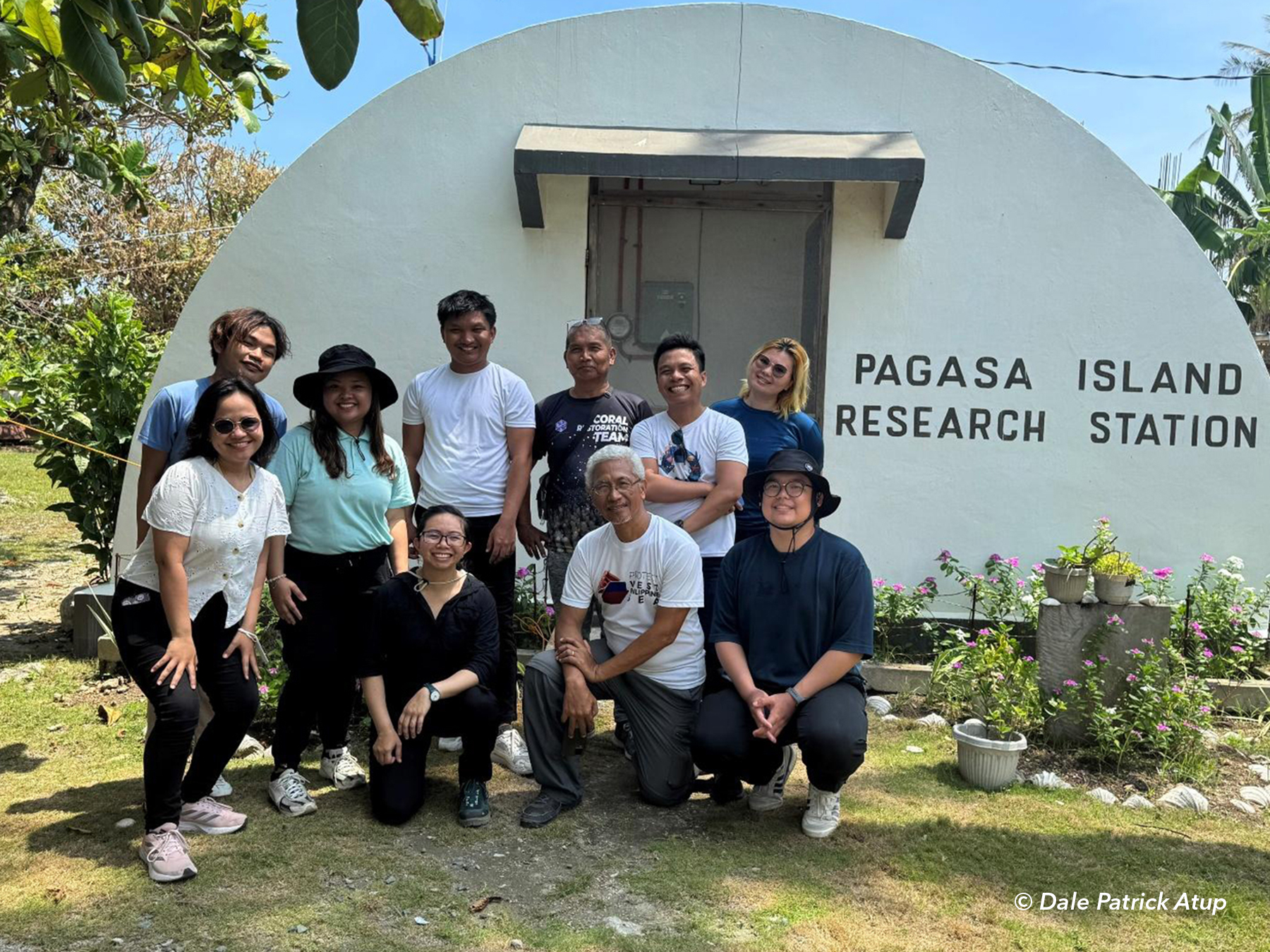Biodiversity Research Continues in Pag-asa Island, West Philippine Sea
FEATURED PHOTO: The April 2025 Pag-asa Island Expedition Team. (Left to Right, Top to Bottom) Lorenz Cajilig, Hannah Grace Siena (DENR-BMB), Claude Michael G. Salva, Fernando Castrence, Jeffrey Munar, Aubrey Abadiano, Kametchi Anne Blancaflor, Gizelle A. Batomalaque, Fernando P. Siringan (Chief Scientist), and Dale Patrick Atup.
A team of 10 researchers from the UP Marine Science Institute and DENR-Biodiversity Management Bureau (DENR-BMB) recently returned from a field survey on Pag-asa Island in the Kalayaan Island Group, West Philippine Sea, conducted from April 25 to May 3, 2025. This field-survey builds on their February 2025 survey, now reaching areas that were previously inaccessible due to large waves. The team continued to explore the invertebrate biodiversity, map the reef’s substrate types, and measure water movement and key physicochemical properties over the reef flat. Coral and fish assessments were also carried out, and long-term monitoring stations on the fore reef were revisited. Additionally, samples of Heliopora coerulea (blue coral) were collected for a population genetics study, which aims to reveal how connected—or isolated—Pag-asa’s blue coral populations are from others across the country.
This work is part of the DENR-BMB-funded BioConSeq-WPS (Integrated Research for Biodiversity Conservation and Carbon Sequestration in the West Philippine Sea), a long-term effort to understand and protect marine ecosystems in this ecologically critical area. The Philippine Air Force provided the transport back to Metro Manila and the Presidential Office for Maritime Concerns (POMC) coordinated support across government agencies.
